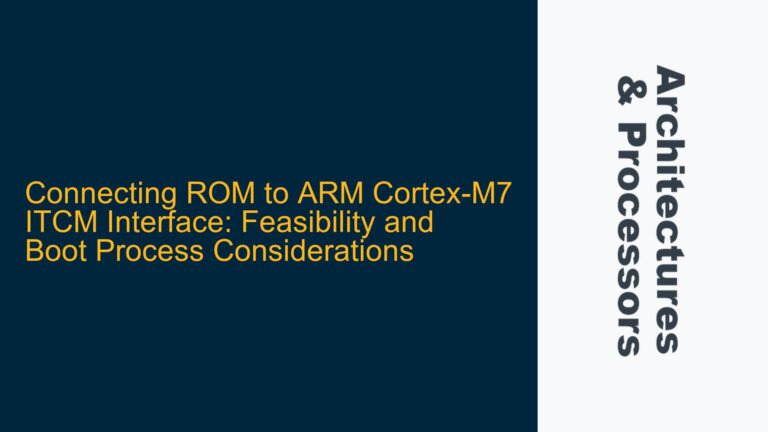Custom SoC vs. Discrete STM32L562: Balancing Parallel Development Tracks
When transitioning from a discrete microcontroller-based design, such as the STM32L562, to a custom System-on-Chip (SoC), one of the most critical challenges is managing parallel development tracks. The STM32L562 is a low-power ARM Cortex-M33-based microcontroller, widely used in embedded systems for its balance of performance, power efficiency, and peripheral integration. However, for high-volume products, especially in cost-sensitive markets like residential IoT devices, a custom SoC can significantly reduce Bill of Materials (BOM) costs by integrating multiple discrete components into a single chip.
The primary advantage of a custom SoC lies in its ability to consolidate functionality, such as the microcontroller core, memory, analog peripherals, and custom logic, into a single die. This integration reduces the number of external components, PCB complexity, and assembly costs. However, the transition from a discrete design to a custom SoC is non-trivial, requiring careful planning, resource allocation, and risk management.
Running parallel development tracks—maintaining the discrete STM32L562 design while simultaneously developing the custom SoC—can be a strategic approach to mitigate risks and ensure continuity. However, this approach introduces complexities, such as ensuring feature parity, managing design iterations, and synchronizing validation efforts. The STM32L562 serves as a reference platform, providing a proven foundation for software development and system validation, while the custom SoC design aims to replicate and enhance this functionality in a more cost-effective package.
The key challenge in this parallel development approach is ensuring that the custom SoC design aligns with the discrete STM32L562 implementation in terms of functionality, performance, and power consumption. Any discrepancies between the two designs can lead to significant rework, delays, and increased costs. Therefore, a thorough understanding of the STM32L562 architecture, its peripherals, and its software ecosystem is essential for guiding the custom SoC design process.
Resource Allocation and Risk Management in Parallel SoC Development
One of the most significant risks in parallel development is resource allocation. Developing a custom SoC requires specialized expertise in semiconductor design, including digital logic design, analog/mixed-signal design, physical implementation, and validation. These activities demand significant engineering resources, which may overlap with the team maintaining the discrete STM32L562 design. Balancing these competing demands is critical to avoid overextending the team and compromising the quality of either design.
Another risk is the potential for feature creep or misalignment between the discrete and custom designs. As the STM32L562 design evolves to meet new requirements or address issues, these changes must be carefully tracked and incorporated into the custom SoC design. Failure to do so can result in a custom SoC that does not fully meet the product requirements, necessitating costly redesigns or even a complete restart of the SoC development process.
To mitigate these risks, it is essential to establish clear communication channels and documentation practices between the teams working on the discrete and custom designs. Regular design reviews and cross-functional meetings can help ensure that both teams are aligned and aware of any changes or challenges. Additionally, maintaining a shared repository of design specifications, test results, and validation reports can facilitate knowledge transfer and reduce the likelihood of discrepancies.
The use of simulation and emulation tools can also play a crucial role in managing parallel development. By creating a virtual prototype of the custom SoC, engineers can validate its functionality and performance against the discrete STM32L562 design before committing to silicon. This approach allows for early detection of issues and reduces the risk of costly errors in the final design.
Ensuring Feature Parity and Performance Consistency
Achieving feature parity between the discrete STM32L562 design and the custom SoC is a critical aspect of parallel development. The STM32L562 offers a rich set of peripherals, including GPIOs, timers, ADCs, DACs, communication interfaces (SPI, I2C, UART), and advanced features like a hardware cryptographic accelerator and a true random number generator (TRNG). The custom SoC must replicate these features while potentially adding new ones to enhance functionality or reduce external component count.
One of the challenges in replicating the STM32L562’s functionality is ensuring that the custom SoC’s peripherals operate with the same performance and reliability. For example, the STM32L562’s low-power modes are a key feature for residential IoT devices, enabling extended battery life. The custom SoC must implement equivalent low-power modes, which requires careful design of the power management unit (PMU) and clock distribution network.
Another consideration is the software ecosystem. The STM32L562 is supported by STMicroelectronics’ HAL (Hardware Abstraction Layer) and LL (Low-Layer) libraries, which simplify software development and portability. The custom SoC must provide a compatible software interface to ensure that existing firmware can be easily ported to the new platform. This may involve developing a custom HAL or adapting open-source alternatives to match the STM32L562’s API.
Performance consistency is another critical factor. The STM32L562’s ARM Cortex-M33 core operates at up to 110 MHz, providing a balance of performance and power efficiency. The custom SoC must deliver equivalent or better performance, which requires careful design of the CPU core, memory subsystem, and interconnect fabric. Any performance bottlenecks in the custom SoC can lead to suboptimal system performance, negating the benefits of the custom design.
To ensure feature parity and performance consistency, it is essential to conduct thorough validation and testing at every stage of the custom SoC development process. This includes functional verification, performance benchmarking, and power analysis. By comparing the custom SoC’s behavior to the discrete STM32L562 design, engineers can identify and address any discrepancies before committing to silicon.
Leveraging ARM Ecosystem and Design Reuse
The ARM ecosystem provides a wealth of resources and tools that can streamline the development of a custom SoC. The ARM Cortex-M33 core used in the STM32L562 is part of the ARMv8-M architecture, which offers features like TrustZone for security and a floating-point unit (FPU) for enhanced computational capabilities. By leveraging ARM’s IP portfolio, custom SoC designers can reduce development time and risk while ensuring compatibility with existing software and tools.
One of the key advantages of using ARM cores is the availability of design reuse. ARM provides a range of standard peripherals, such as interrupt controllers, timers, and communication interfaces, that can be integrated into the custom SoC. These peripherals are well-documented and widely used, reducing the need for custom development and validation. Additionally, ARM’s DesignStart program offers access to Cortex-M series cores, enabling startups and small companies to develop custom SoCs with minimal upfront costs.
Another benefit of the ARM ecosystem is the availability of development tools and software libraries. ARM’s Keil MDK and ARM GCC toolchains support the Cortex-M33 core, providing a familiar development environment for engineers transitioning from the STM32L562. Additionally, ARM’s CMSIS (Cortex Microcontroller Software Interface Standard) provides a standardized API for accessing core and peripheral features, simplifying software portability and reuse.
By leveraging the ARM ecosystem, custom SoC designers can focus on differentiating features and optimizations, rather than reinventing the wheel. This approach not only reduces development time and cost but also ensures compatibility with the broader ARM ecosystem, facilitating software development and third-party integration.
Conclusion: Strategic Parallel Development for Custom SoC Success
Developing a custom SoC in parallel with a discrete STM32L562 design is a complex but potentially rewarding endeavor. By carefully managing resource allocation, ensuring feature parity, and leveraging the ARM ecosystem, companies can reduce BOM costs while maintaining product quality and performance. The key to success lies in thorough planning, clear communication, and rigorous validation, ensuring that the custom SoC meets or exceeds the capabilities of the discrete design.
While the challenges of parallel development are significant, the potential benefits—reduced costs, enhanced functionality, and competitive advantage—make it a compelling strategy for high-volume products. By adopting a structured and disciplined approach, companies can navigate the complexities of custom SoC design and achieve their goals of economic viability and market success.






